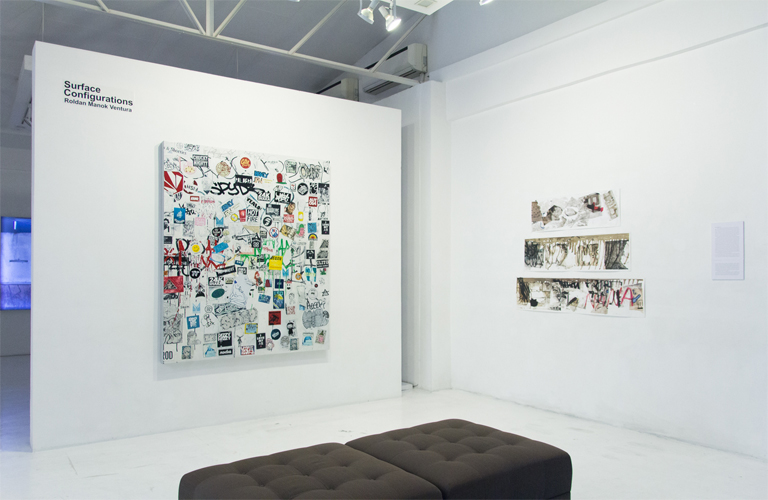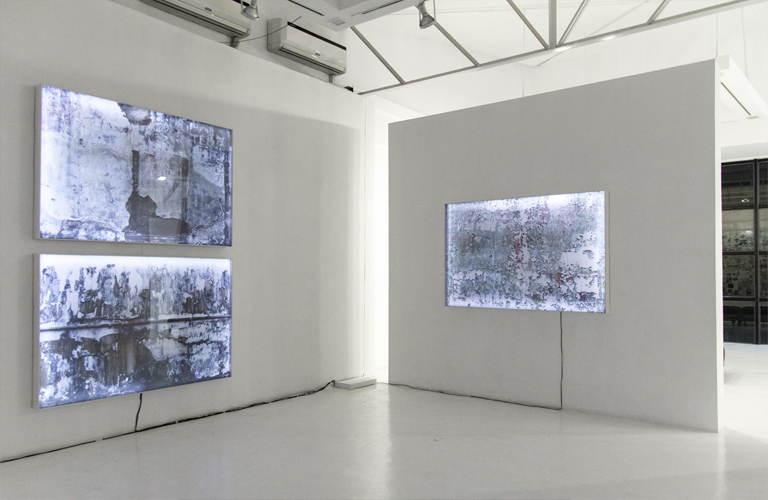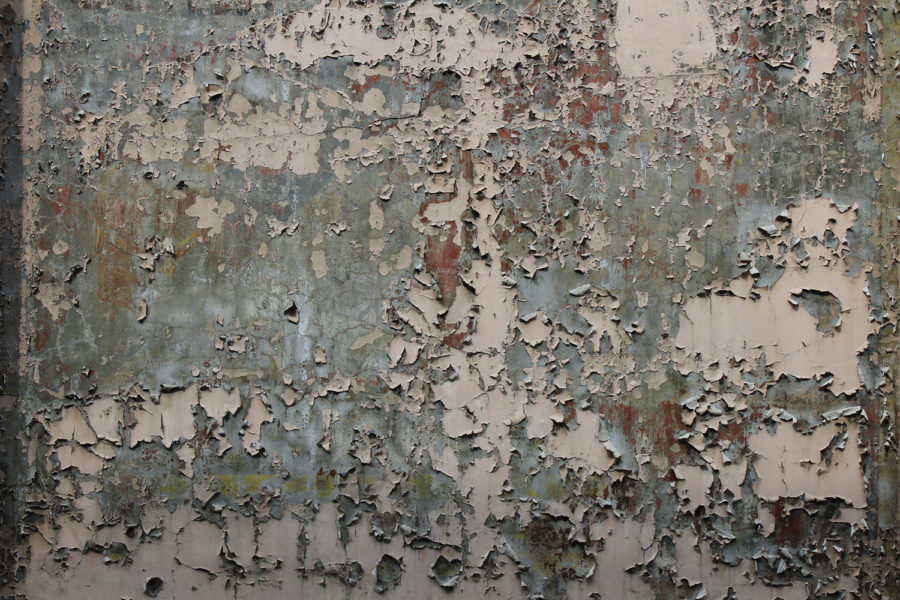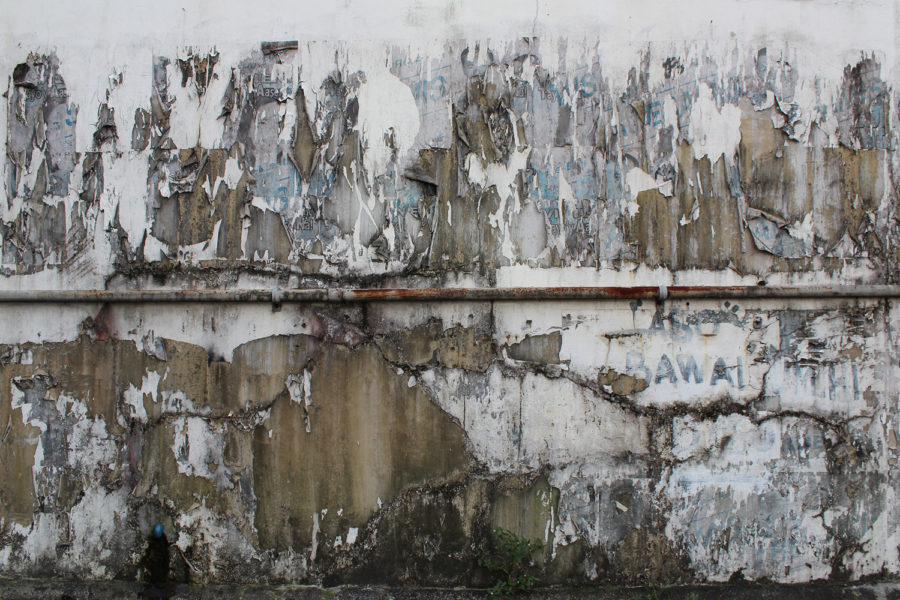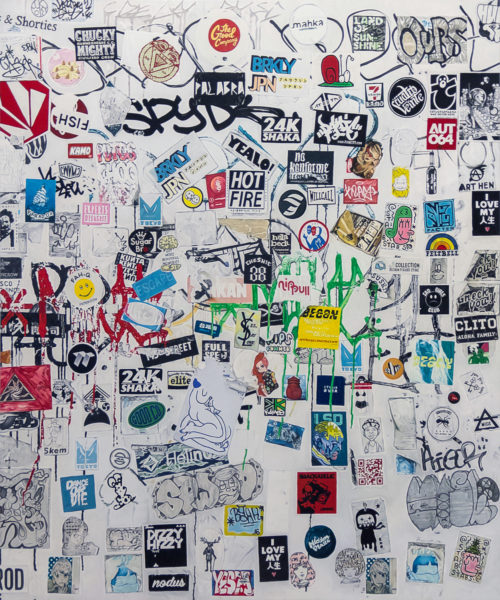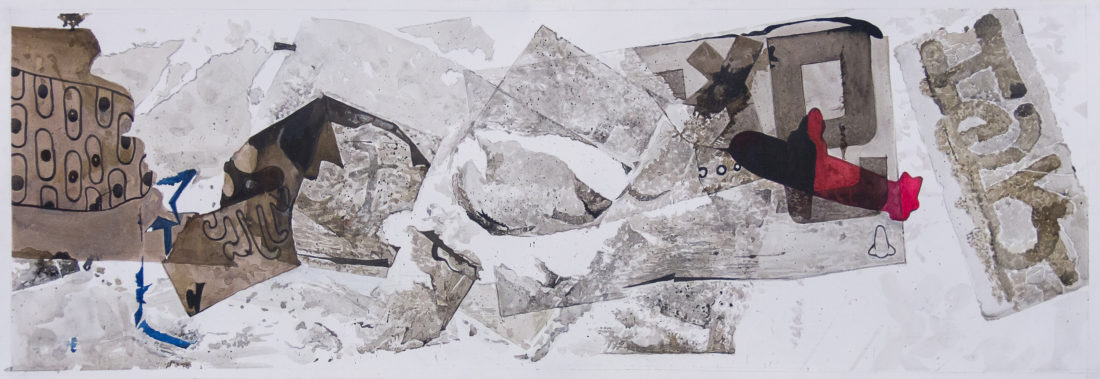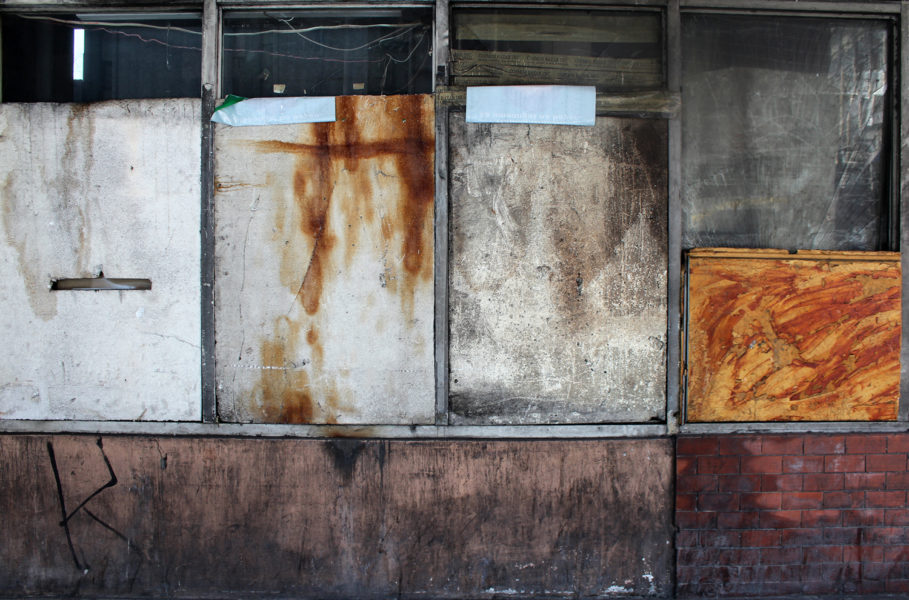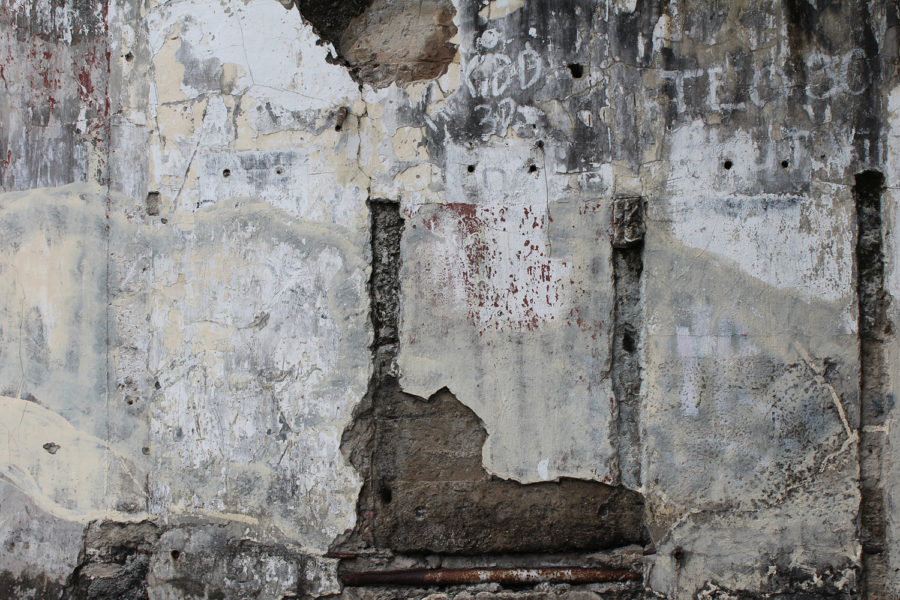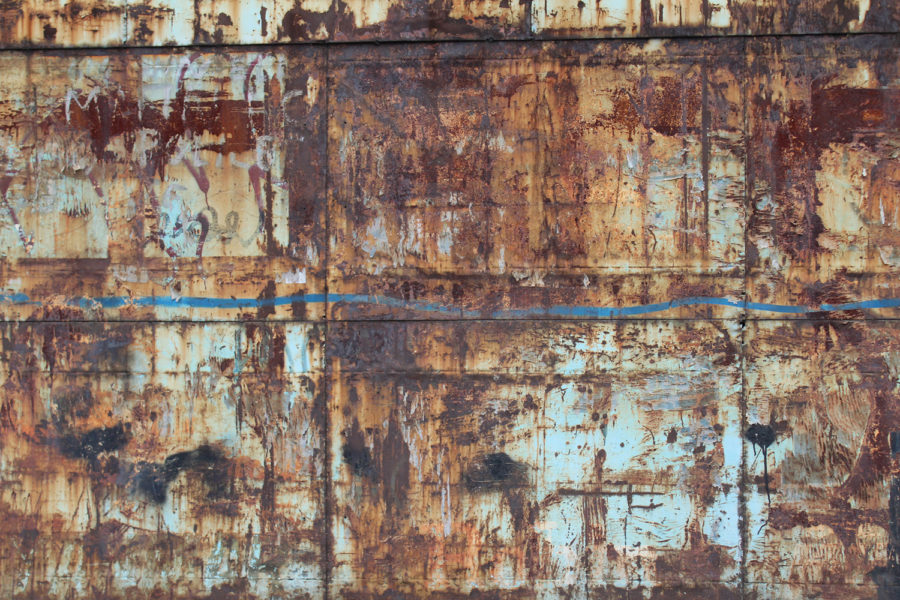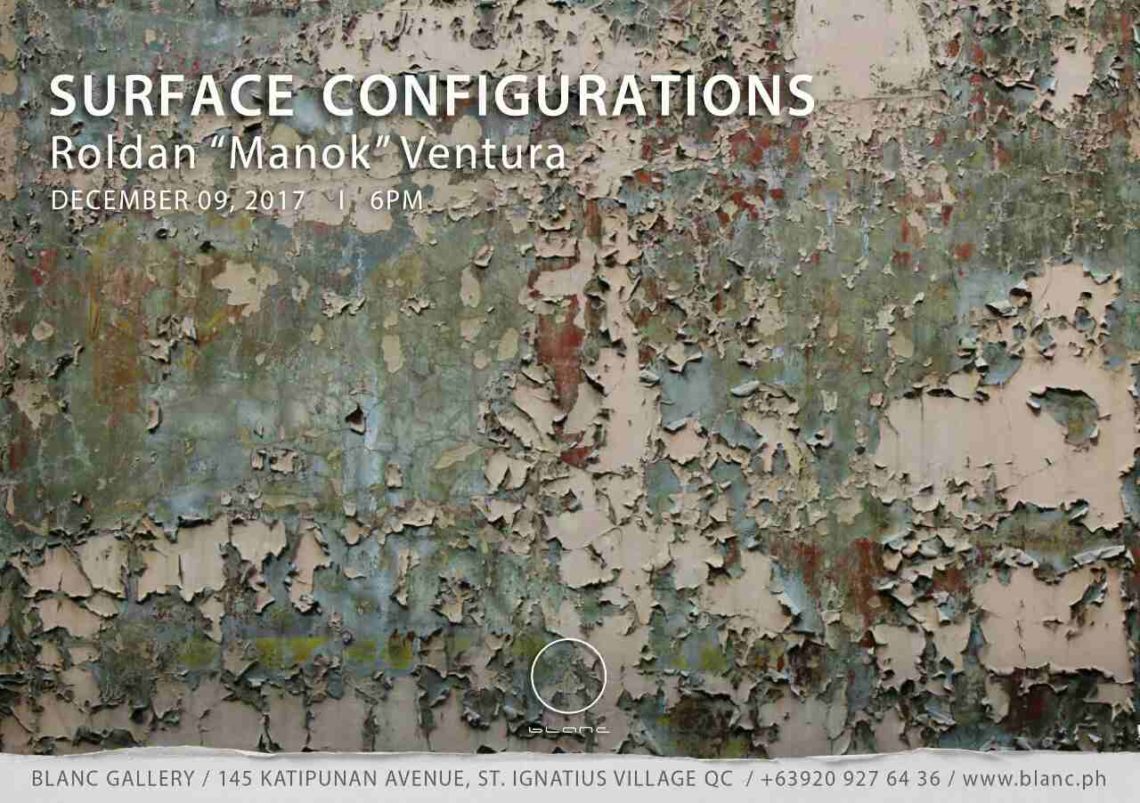
Surface Configurations
The urban landscape is replete with diverse, at times chaotic assortment of surfaces: the glass walls of skyscrapers, asphalt finish of roads, patterned pavement of sidewalks. Some of these surfaces may have seen better days, succumbing to states of deterioration due to natural factors or neglect, as in paint chipping off, eroded concrete, or rusting metal. Still others are produced by deliberate acts, like walls layered with graffiti. Often regarded as unsightly residues of the processes that shape the built environment, such surfaces have been taken as signs of decay in an urban setting, akin to the harmful by-products of industries that cause pollution. As such, these are the usual elements targeted by urban renewal projects oriented at enhancing the city veneers and projecting an image of a well-maintained environment.
Manok Ventura takes interest in such surfaces and explores the configurations produced by the dynamic interaction between natural and human forces. His art has always been fixated with the gray areas between the spontaneous and the deliberate, the intentional and the accidental. In this suite of new works, he gathers visually-provoking forms, textures, colors, and patterns from surfaces on the streets and structures he encounters as a city dweller. In his daily commute and other instances of mobility around the metropolis, he seeks inspiration from sites usually dismissed as unattractive features of an urban locale. He sources materials from old, dilapidated and abandoned buildings, public walls, bridges, overpasses and underpasses. Here, he pays keen attention to details such as discoloration, rusting, flaking and crumbling, all outcomes of exposure to harsh elements like smog, extreme heat, and moisture. The complex visual compositions resulting from these chemical reactions are then translated into abstract paintings or presented in light boxes. The intervention is reminiscent of the aesthetic tradition appreciating the worn out and faded, celebrating the natural cycle of birth and decay, the transience of life and the ephemeral nature of things. This component of the works highlights the artist’s fascination with the accidental and unintentional in the creative process, discovering possibilities with the behavior of materials when left on their own.
Yet, the works also harness the products of deliberate human action: those executed consciously which go beyond natural occurrences and driven by human intervention. The vibrant display of patches and collages created by the palimpsest of spray paint, stickers, and posters—a familiar sight in a many urban surfaces—are equally appropriated in the collection. The artist’s painting technique itself reflects the complementary relationship between spontaneous, natural flow and carefully calculated movement of the brush. His roots in photorealism are evident in his works, often based on photographs and exhibit faithfulness to details. Though this method require meticulous handling of the brush, he leaves a lot of room for spontaneity in execution, feeling the flow and energy of the brushwork and letting it define the painting’s course. The natural processes earlier described—the peeling, corrosion, and natural perishing of surfaces—are likewise induced by man-made substances and processes. The line dividing man and nature have become blurred.
This gathering of works may ultimately remind us of the vulnerability of the environment and infrastructures we have constructed to deterioration and demise, albeit the vision for them to last long. But these surfaces are also testaments to dynamic histories, the rapid changes we have endured, and the test of time we have withstood in the urban milieu.
Works
Documentation
